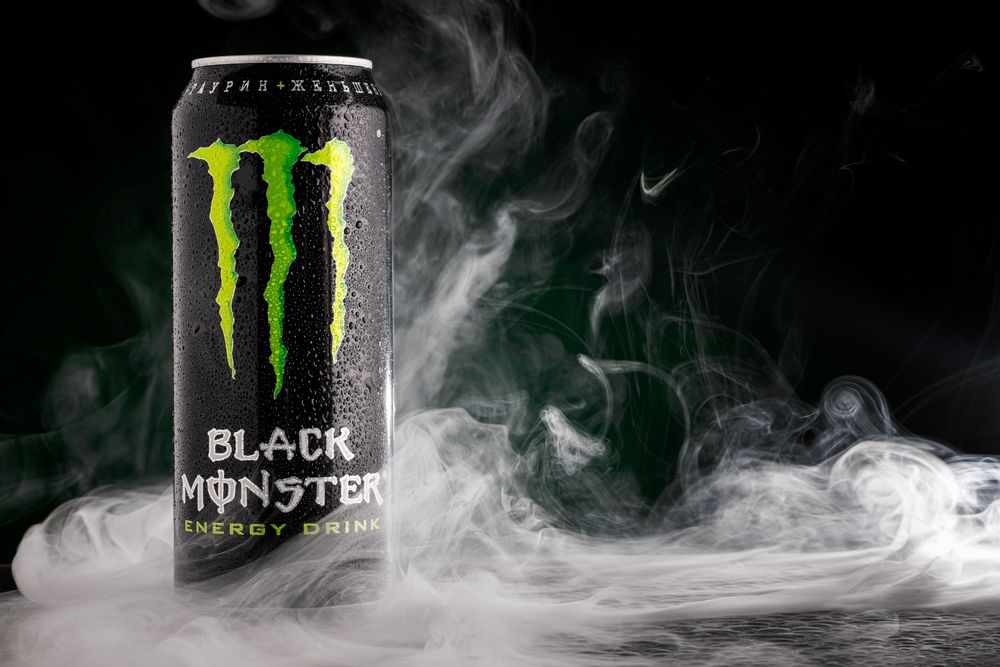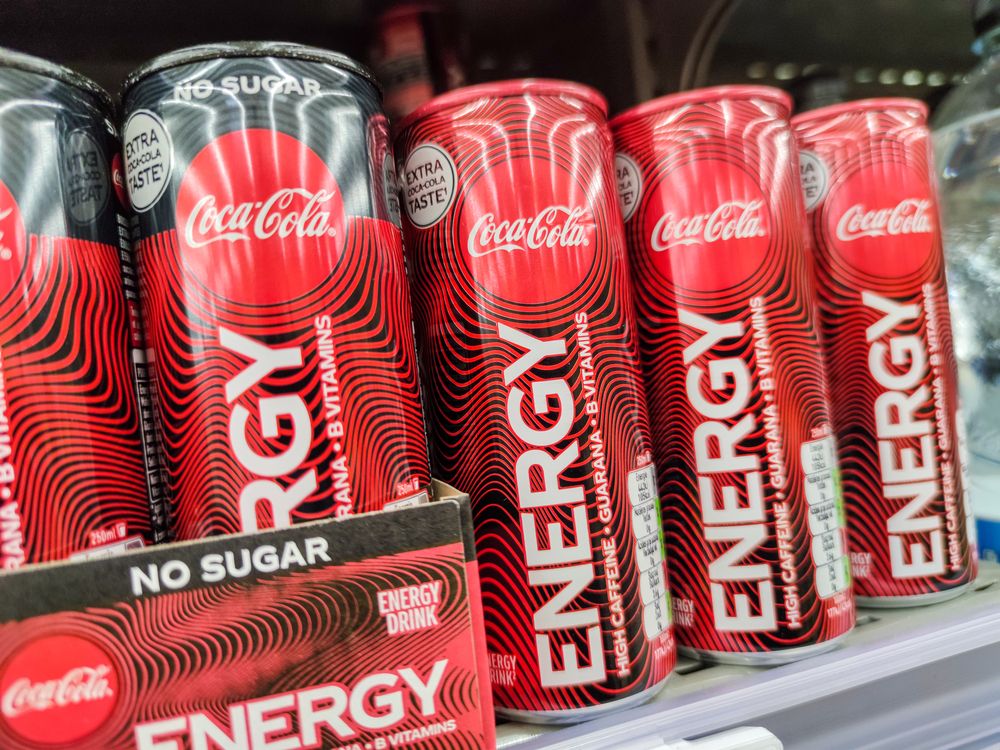
Energy is a valuable commodity, especially in today’s fast-paced American lifestyle. For a quick pick-me-up, you might reach for healthy options like green tea or black coffee. But if you're looking for something stronger, the shelves are now packed with colorful, canned energy drinks. From the classic Red Bull, loaded with caffeine, taurine, and sugar, to newer, health-conscious options like low-calorie, vitamin-enriched Celsius, there's something for everyone.
The demand for energy drinks has surged in recent years. According to Statista, nearly one-third of Americans aged 18 to 49 consume these highly caffeinated beverages. U.S. sales have risen dramatically, jumping from about $11 billion in 2017 to around $18.5 billion in 2023.
These vibrantly labeled energy drinks may give you the jolt you need to get through your day, but are any of them actually enjoyable to drink?
I recently put seven of America’s top-selling energy drink brands to the taste test to find the best one purely based on flavor. For this comparison, I selected one of the most popular flavors from each brand. The results, much like the boost from these drinks, were eye-opening.
Here’s how each brand ranked, from my least favorite to the top pick.
Prime Tropical Punch
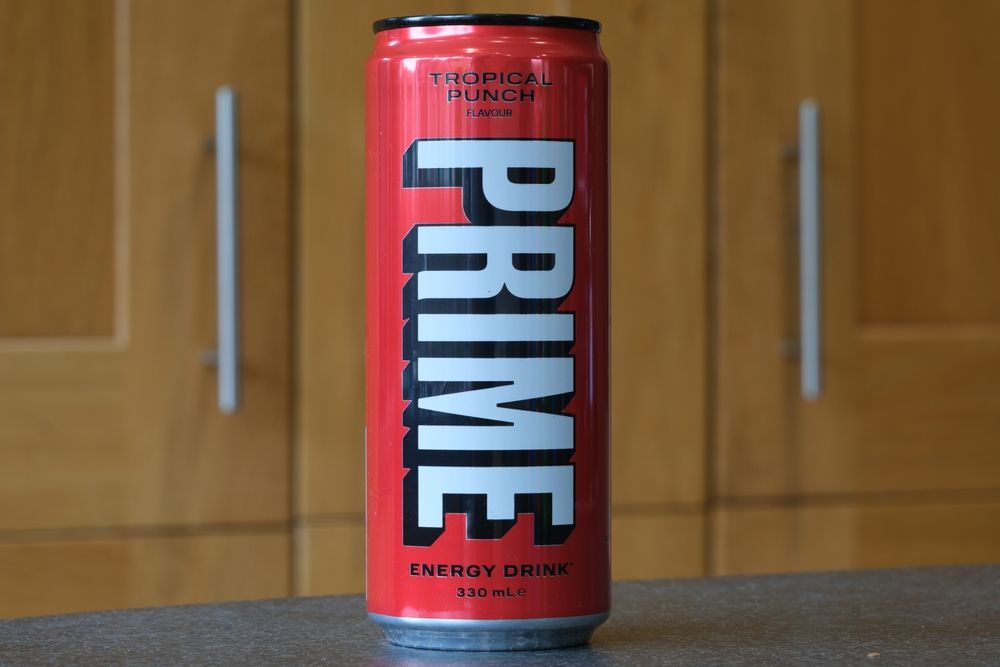
Nutrition (Per 12-oz. Can):
- Calories: 10
- Fat: 0 g
- Sodium: 55 mg
- Carbs: 3 g (Fiber: 0 g, Sugar: 0 g)
- Protein: 0 g
One of the newer brands on the market, Prime has quickly gained recognition, thanks to its influencer-founders Logan Paul and Olajide "KSI" Olatunji, who leveraged their social media fame to build a beverage empire. Initially launched as a line of hydrating sports drinks, Prime expanded into energy drinks in 2023.
Prime now offers eight energizing flavors, including the popular Tropical Punch, which delivers 200 milligrams of caffeine and 300 milligrams of electrolytes in each slim 12-ounce can. I picked one up from my local grocery store for a taste test.
The look:
Surprisingly muted. With its vibrant red packaging, I expected a bright, Hawaiian Punch-like color. Instead, the drink poured out cloudy, similar to coconut water. This makes sense, as coconut water concentrate is the second ingredient after carbonated water.
The taste:
Unexpectedly astringent. The first sip hit with a sharp, tannic bite that tingled on my tongue. Once the initial sensation passed, a mix of tangy, tart, and sweet flavors emerged. Like many newer energy drinks, Prime uses sucralose as a sweetener, which keeps the calorie count low but also lends the drink a synthetic taste. For me, Prime’s flavor felt the most artificial, which is why it landed at the bottom of my ranking.
Ghost Sour Patch Kids Redberry
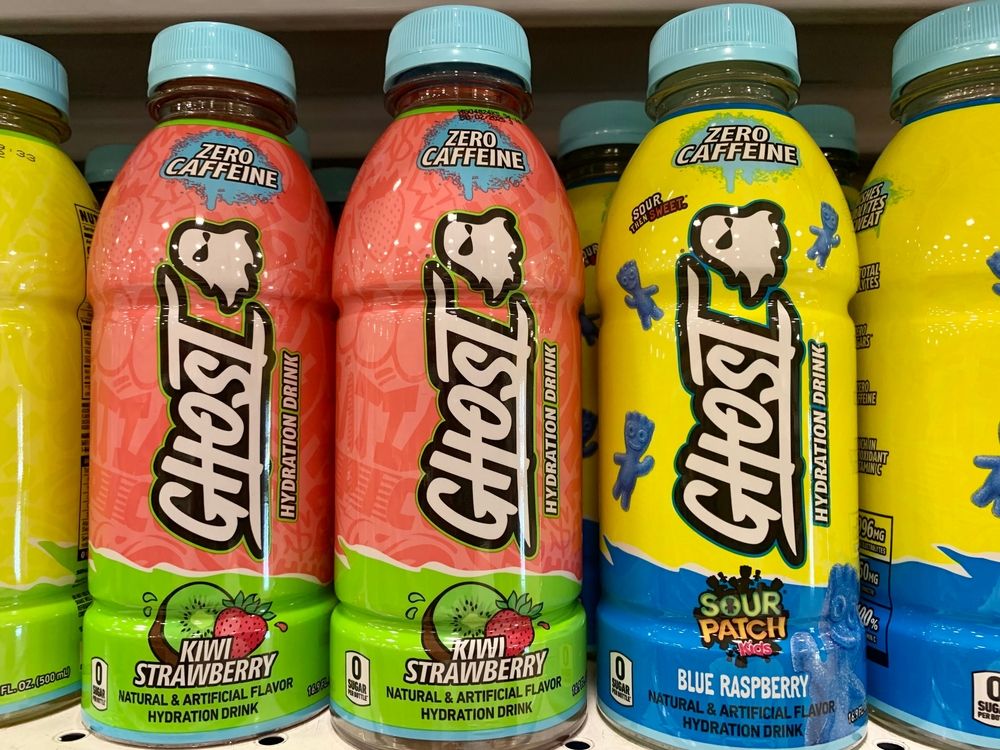
Nutrition (Per 16-oz. Can):
- Calories: 5
- Fat: 0 g
- Sodium: 35 mg
- Carbs: 1 g (Fiber: 0 g, Sugar: 0 g)
- Protein: 0 g
If you’ve got a sweet tooth, Ghost might be the energy drink brand for you. Backed by beverage giant Anheuser-Busch, Ghost offers a variety of flavors inspired by popular candies like Warheads and Swedish Fish. The Sour Patch Kids Redberry flavor is perhaps the most well-known.
Each 16-ounce can packs a punch with 200 milligrams of caffeine, 1,000 milligrams of taurine, and moderate doses of ginseng and B vitamins. I picked one up from a local store for $3.49.
The look:
Golden and fizzy, reminiscent of sparkling white wine. You could call it the "Champagne of energy drinks" if you're feeling fancy, though it’s more like the bargain bubbly you’d grab at the pharmacy.
The taste:
Tart and syrupy. The first sip hit with a sharp sour lime flavor, followed by an overpowering sweetness. The aftertaste reminded me of a cherry-flavored freezer pop, specifically the sugary liquid left at the bottom of the plastic wrapper once the popsicle is gone. Like Prime, Ghost is sugar-free and sweetened with sucralose, which gives it a somewhat artificial taste. It’s also the most overly sweet drink of all those I sampled in this survey.
Red Bull

Nutrition (Per 8.4-oz. Can):
- Calories: 110
- Fat: 0 g
- Sodium: 105 mg
- Carbs: 29 g (Fiber: 0 g, Sugar: 27 g)
- Protein: 0 g
Although today you can find a wide array of energy drinks filling store shelves, it all began with one: Red Bull. This Austrian beverage essentially created the energy drink category when it launched in the U.S. in 1996, and it remains the top seller, reporting over $7 billion in U.S. sales last year, according to Statista.
While Red Bull now offers sugar-free and seasonal flavors, the original formula is still a classic. Made with real sugar, it packs more calories than many competitors, but delivers one of the lowest caffeine amounts—just 80 milligrams per 8.4-ounce can. I picked one up at a local supermarket for $2.
The look:
Amber-colored like honey with a moderate fizz, it’s the kind of liquid that looks much the same going in as it does coming out—for better or worse.
The taste:
Syrupy sweet with a vaguely medicinal flavor and a noticeable metallic aftertaste. It’s hard to compare to anything else because Red Bull’s taste is so distinct. If you were of legal drinking age in the early 2000s, you likely remember mixing it with vodka—a popular club combo at the time. Without the alcohol, though, the flavor feels unbalanced. As recognizable as it is, there are plenty of energy drinks today that deliver the same boost without making you feel like you just licked a metal pole.
Original Green Monster Energy
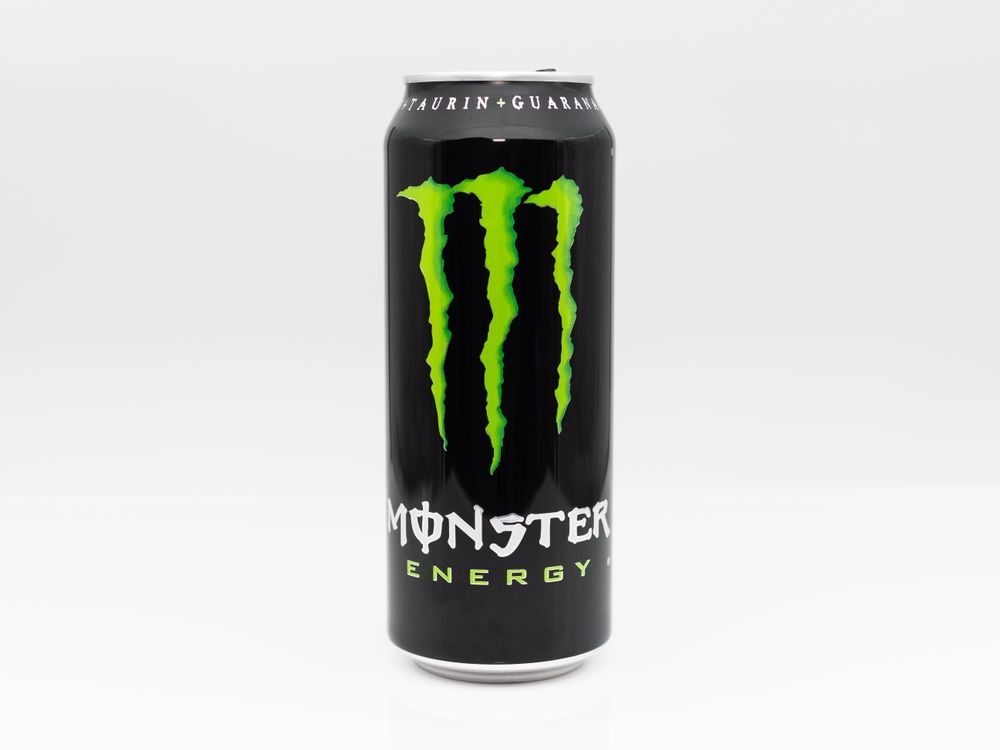
Nutrition (Per 16-oz. Can):
- Calories: 230
- Fat: 0 g
- Sodium: 370 mg
- Carbs: 58 g (Fiber: 0 g, Sugar: 54 g)
- Protein: 0 g
With Red Bull's rise in popularity at the turn of the century, it was only a matter of time before competitors followed. Launched in 2002, Monster Energy took what consumers loved about the original energy drink and amplified it, offering even more caffeine in a larger 16-ounce can. Now the second-largest brand after Red Bull, Monster offers a variety of flavors, from White Pineapple to Peaches N' Cream. However, its original flavor, in the iconic black can with green lettering, remains a fan favorite.
Each 16-ounce can delivers 160 milligrams of caffeine and a whopping 54 grams of sugar, along with significant amounts of B vitamins. I picked one up from a local supermarket for $2.50.
The look:
Slightly foamy and yellow-brown, resembling a light beer. It’s a shade or two darker than Red Bull, which seems appropriate given Monster's mission to outdo its rival.
The taste:
Sugary and acidic. The flavor is somewhat similar to Red Bull, but much sweeter and smoother—more like candy and less like cough syrup. I enjoyed it more than I expected, though it’s hard not to feel a mood boost after consuming something so loaded with sugar, even if the effect is short-lived.
C4 Frozen Bombsicle
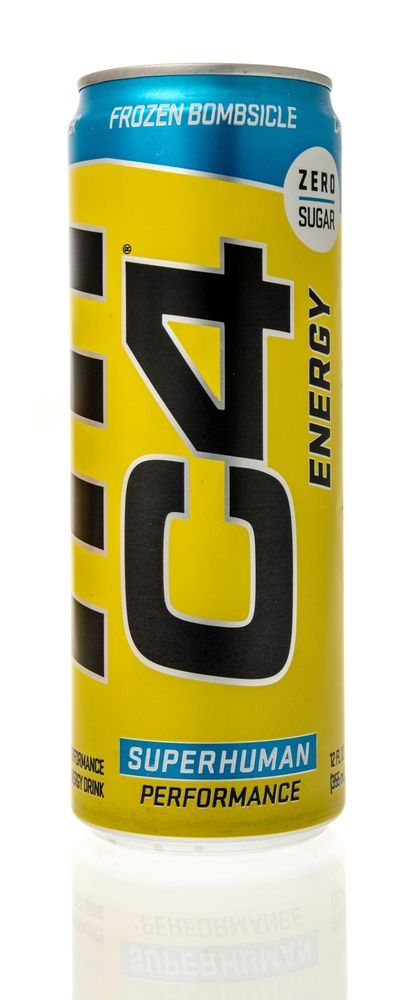
Nutrition (Per 16-oz. Can):
- Calories: 5
- Fat: 0 g
- Sodium: 55 mg
- Carbs: 0 g (Sugar: 0 g)
- Protein: 0 g
Primarily marketed as a sport and fitness drink, C4 is one of the fastest-growing energy drink brands today, offering a variety of flavors that are sugar-free, carb-free, and extremely low in calories. The Frozen Bombsicle flavor stands out in particular. In addition to delivering 200 milligrams of caffeine, this drink is also infused with beta-alanine, a popular supplement for enhancing endurance. I grabbed a 16-ounce can at my local supermarket for $3.99.
The look:
Crystal clear and bubbly, resembling sparkling water. Its clean appearance aligns with the brand's fitness-forward image.
The taste:
Reminiscent of liquefied Sweet Tarts, with flavors of raspberry, cherry, and lemon. While flavorful, the sweetness was subtle, making for a refreshing and lightly fizzy experience. Though it contains sucralose like many sugar-free drinks, C4 didn’t taste as synthetic as others in this survey, which helped elevate it to one of my top three picks.
Celsius Sparkling Orange
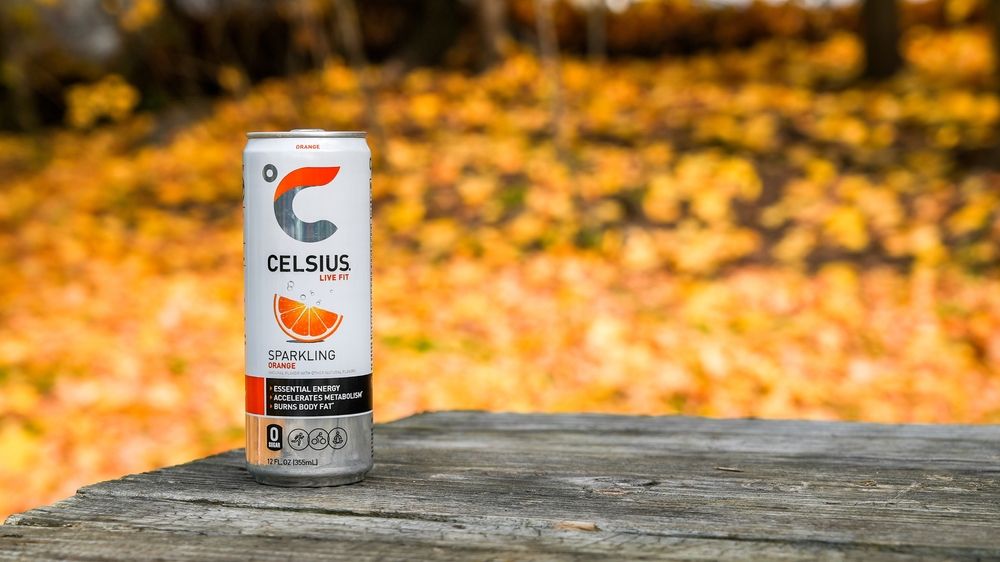
Nutrition (Per 16-oz. Can):
- Calories: 10
- Fat: 0 g
- Sodium: 5 mg
- Carbs: 0 g
- Protein: 0 g
Another fitness-focused and health-conscious brand, Celsius is quickly gaining traction and is now the third top-selling energy drink in the U.S., behind only Red Bull and Monster. Originally from Sweden, Celsius now offers 27 different flavors, with Sparkling Orange being one of the most popular. It’s so in-demand that I had to visit several stores before finding it. Packed with B vitamins and 200 milligrams of caffeine, I picked up a 12-ounce can for $3.50 at a local bodega.
The look:
A translucent tangerine hue reminiscent of classic orange Gatorade, this fizzy drink exuded sports drink vibes right from the start.
The taste:
Like a drier version of Sunkist orange soda, it was bright, crisp, and lightly citrusy with just a touch of sweetness. The restraint in sweetness helped minimize the artificial flavor often associated with sucralose. Overall, it was the most well-balanced and refreshing energy drink I tried. However, there was still one brand that topped it.
Alani Nu Cherry Slush
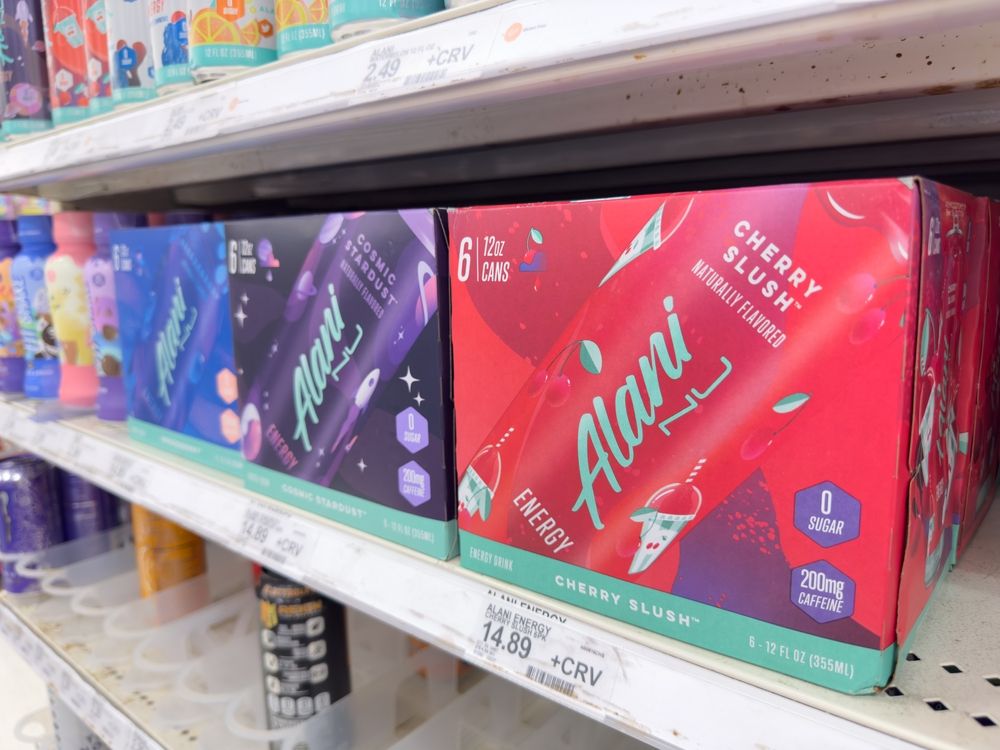
Nutrition (Per 12-oz. Can):
- Calories: 10
- Fat: 0 g
- Sodium: 170 mg
- Carbs: 3 g (Fiber: 0 g, Sugar: 0 g)
- Protein: 0 g
Founded by fitness influencer Katy Hearn in 2018, this rapidly growing brand offers a range of "feel-good" products, including protein shakes and energy drinks. The Cherry Slush flavor is one of its best-sellers. Like many others in this category, it’s packed with B vitamins and 200 milligrams of caffeine, but it offers a uniquely enjoyable experience. Available in both 8.4-ounce and 12-ounce cans, I picked up the larger version for $2.99 at Walgreens.
The look:
Striking. It poured a vibrant hot pink color with just the right level of fizz.
The taste:
Pure nostalgia. This flavor is a spot-on replica of a classic cherry Icee, instantly transporting me back to childhood days of sipping frozen treats through a big red straw at the movies. It’s fruity, sweet, and reminiscent of the popular slushy, but without the sugar and with only a fraction of the calories. The smooth, fizzy drink went down easily, contrasting with the harsh bite of many other energy drinks.
From a pure enjoyment perspective, Alani's Cherry Slush was the one option that not only energized me but left me excited to drink it again.

